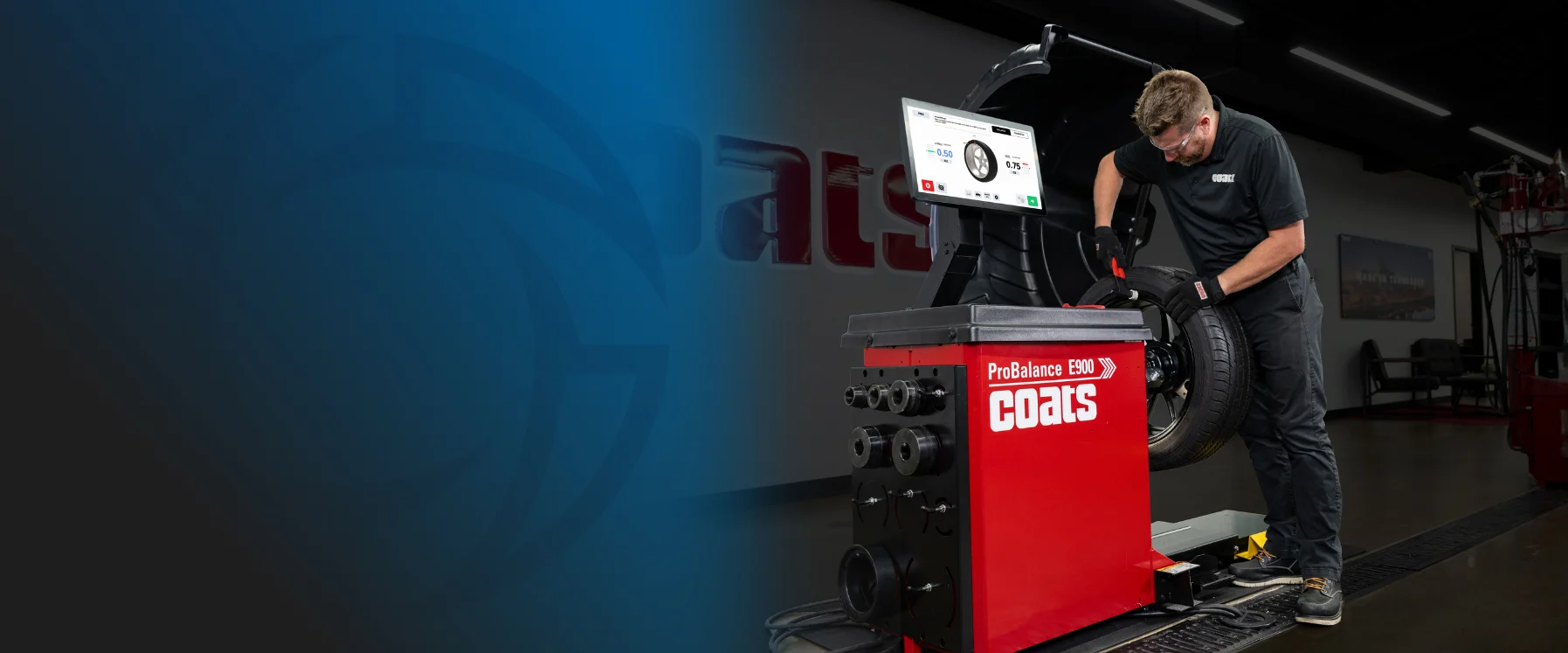- Home /
- Mastering the Art of Balancing Large Custom Truck Wheels
Mastering the Art of Balancing Large Custom Truck Wheels
Table of Contents
This column is a part of our Product Insights Series, where our product managers discuss timely industry topics and share their know-how about all things automotive service. Check back monthly for more.
The latest custom car trends have always provided many challenges to service centers. Whether mounting low-profile raised white letter tires on 16″ Panasports in the early 1990s or even trying to balance 26″ wheels in the 2000s times and trends are always changing and thank goodness because the ever-changing landscape keeps automotive service interesting and challenging. The latest trend independent tire dealers and service centers are currently seeing are large-diameter, wide truck wheels with a high negative offset. These wheels seem to be flying off the shelf and getting installed on ¾ ton and 1-ton trucks at a fever pitch. These wheels present a unique challenge to balance because of their weight, size, and high negative offsets. Balancing these wheels out for a smooth ride with the correct accessories and techniques can be as easy as any other assembly.
Understanding the Challenge of Large Truck Wheels
One of the main things to consider when balancing a wheel is making sure that a wheel like this will be centered properly. Wheels of this type are very heavy and can be challenging to center properly. If a wheel is not centered, it cannot be balanced. The first step to centering a wheel like this will be to select a proper low–taper collet and not a cone. Modern wheels must be centered from the backside using a proper collet. A high taper cone for example will not center a wheel such as this properly.
Proper Wheel Centering Techniques
Once the proper collet has been selected place it on the wheel balancer. Next, make sure the hub bore center on the wheel is clean and has no corrosion or debris if it is not clean simply use a wire brush and carefully remove the corrosion. To center a wheel with a high negative offset, using a wheel lift can help tremendously. The wheel lift will allow the wheel to sit straight on the collet and center itself. Use the wheel lift to hold the wheel in place on the shaft of the balancer. Now that the wheel is over the shaft of the balancer, it’s time to prepare our next piece of tooling: the pin plate. Using a proper pin plate with the correct number of pins will not only protect the wheel, it will also hold the wheel square to the collet and keep it centered properly. Not using a pin plate can damage sensitive surfaces on wheels such as chrome finishes or powder coating. Once the pin plate is adjusted and pins are aligned with the lug holes on the wheel, use the balancer wing nut to secure the wheel to the balancer.
Balancing Large Custom Truck Wheels
Large custom truck wheels like this should be balanced using adhesive weights on the inboard side only. If the wheels are black or dark in color use a black wheel weight to make the weights less visible. If the wheels have a lot of open areas between the spokes using the balancers behind the spokes mode is an excellent way to hide the weights and stop them from interfering with the look of the wheel. Balance the wheel down to zero and be sure to use a feature such as Pro Balance to eliminate any residual static.
Advanced Balancing Techniques
For demanding customers who prefer the very best cosmetic appearance and prefer not to see any weights at all or customers who take their trucks off-road: a balancer such as the Coats 1500 with the patch balance mode is an excellent way to create excellent ride quality without the unsightly appearance of excessive wheel weights that balancing these types of wheels can produce. At a custom truck shop in Tennessee that wanted to provide a higher level of service for their expensive wheel and tire packages, they use the patch balance procedure. They center the wheel as explained above, put the balancer in patch mode and balance all the static forces out by applying the weight to the inside of the tire where it can never be seen or fly off. Then they simply put the balancer back into dynamic mode and hang the small amount of weight behind the spokes required to remove any dynamic forces left in the wheel. With patch balance there is no need to sacrifice daily ride quality to have off-road durability and show quality looks.
Elevating Your Wheel Balancing Skills
Balancing large custom truck wheels with high negative offsets may seem daunting, but with the right tools and techniques, it can be done efficiently and effectively. By following the steps outlined above and using a high-quality wheel balancer like the Coats Direct Drive Series 1500, service centers can ensure a smooth ride and satisfied customers. For more insights and tips on balancing tough truck wheels, visit the Coats Company website and explore our Product Insights Series.
US Headquarters
1601 J.P. Hennessy Drive
LaVergne, TN 37086 USA
Sales Inquiries: 855-876-3864
Customer Service: 800-688-6359
Fax: 615-747-2952
Canada
2430 Lucknow Drive, Unit 9
Mississauga, Ontario
L5S 1V3 Canada
Phone: (877) 801-1405
Fax: (905) 672-9455
Related Articles

Meet Coats at SEMA: Moving People and Turning Technology

E900 Wheel Balancer: Key Features That Make It a Shop Workhorse
